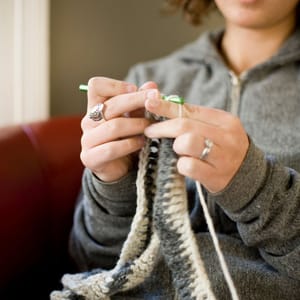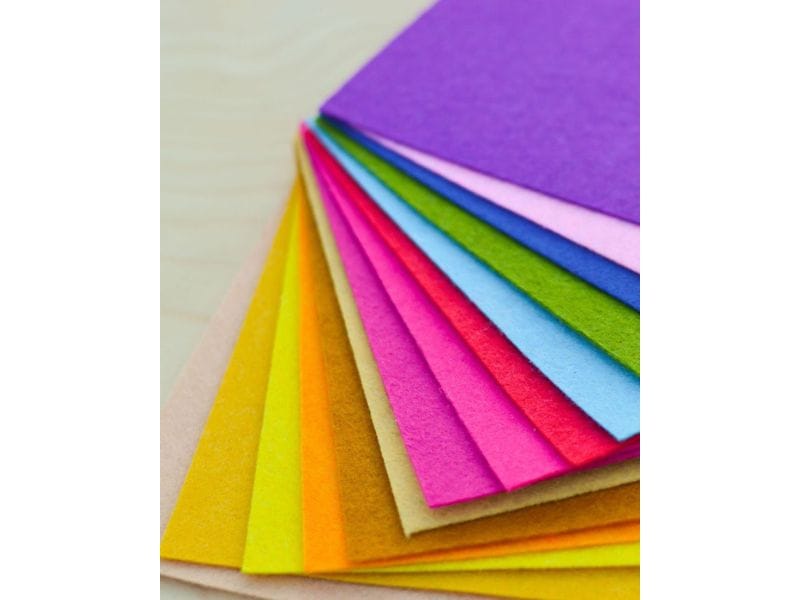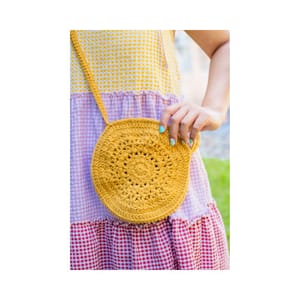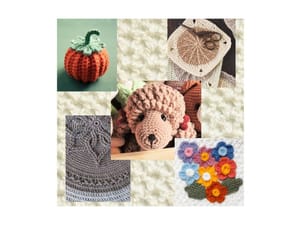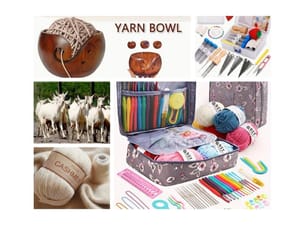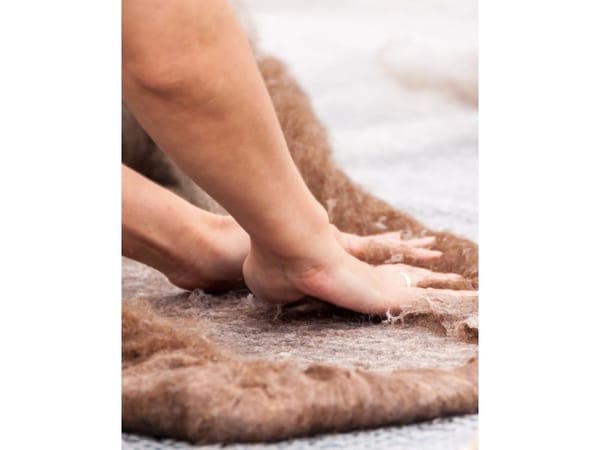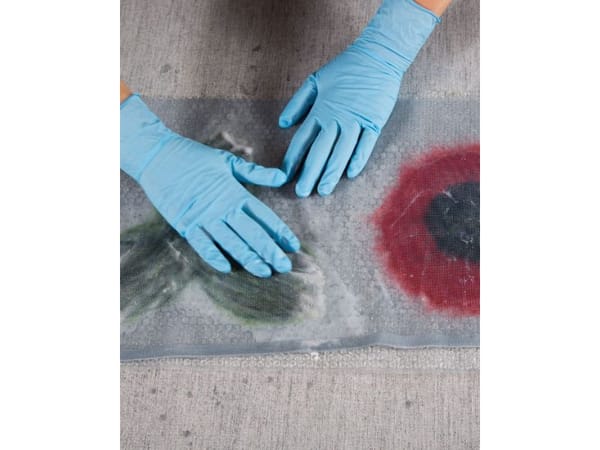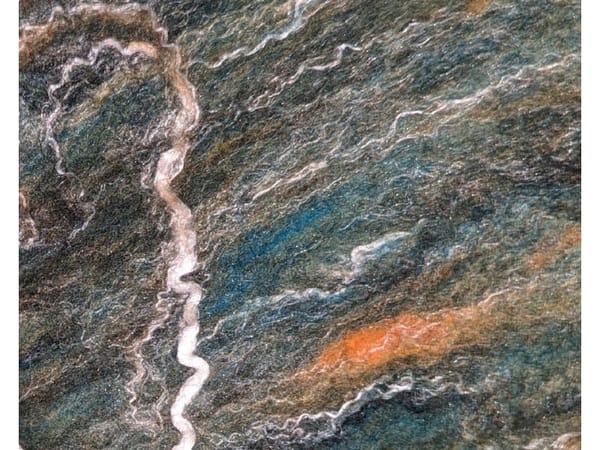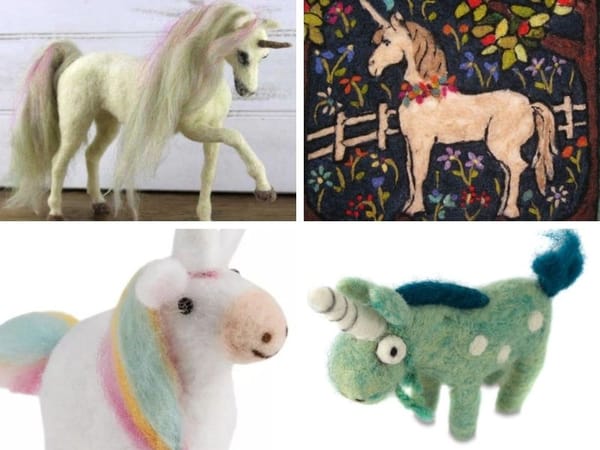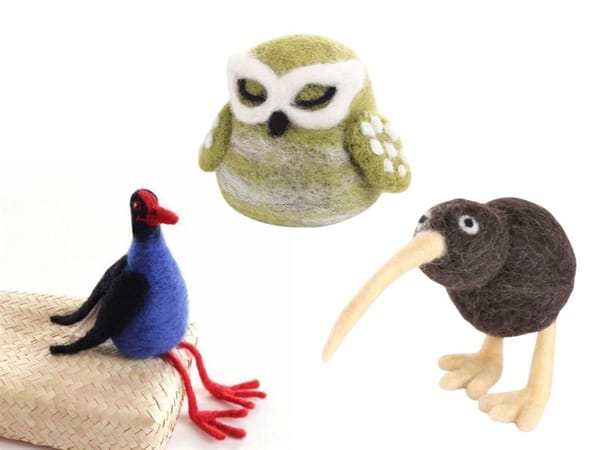And Can You Needle Felt onto Felt Sheets?
Discover the magic of wet felting with felt sheets! Dive into our fun, informative guide to see if felt sheets can be your next craft sensation!
FeltingWet FeltingArticles by Tilly April 23, 2024 ∙ 9 min read (updated 06/17/2024)
For those looking to start needle felting, felt sheets (or felt squares Michaels) can be a great base material to begin with, offering a sturdy surface for your initial projects.
Wet felting is a popular craft technique that transforms wool into dense fabric by combining heat, moisture, and pressure.
While traditional wet felting involves wool roving or fleece, many crafters wonder if they can use felt sheets for wet felting to create diverse projects like scarves, pillows, or even artistic sculptures.
While wet felting is a popular technique, it’s important to note that needle felting involves using felt sheets as a base for projects and creating flat designs like pictures or wall hangings.
This article explores the feasibility and methods of using felt sheets in wet felting.
Key Takeaways:
- Felt sheets can be incorporated into wet felting projects, but they behave differently than loose wool fibers.
- Pre-felt sheets are more suitable for wet felting than craft felt due to their loosely interlocked fibers.
- Techniques such as layering, and embellishment can enhance the integration of felt sheets into wet felted projects.
Understanding Wet Felting Basics
Wet felting involves agitating wool fibers in soapy water, causing them to hook together into a smooth, non-woven fabric.
This process typically uses wool roving or fleece because their loose fibers easily interlock.
When considering whether you can use felt sheets for wet felting, it's essential to understand the structure of the felt and how it interacts with water and agitation.

The Role of Felt Sheets in Wet Felting
Felt sheets, commonly found in craft stores, are made by mechanically pressing fibers together. These sheets are denser and less pliable compared to the loose fibers of wool roving.
While craft felt is primarily synthetic, pre-felt sheets made from natural wool are partially felted and can be more effectively integrated into wet felt projects.

Choosing the Right Type of Felt
For successful wet felting, selecting the appropriate type of felt is crucial. Pre-felt, which is essentially a lightly felted wool sheet, is ideal as it allows for further felting. Incorporating various wet felting techniques, such as Nuno felting or felting over objects, can enhance the texture and versatility of your projects.
In addition to pre-felt and craft felt, other fabrics like canvas fabric can also be used for specific needle felting projects.
In contrast, craft felt made from synthetic materials does not offer the same flexibility and may not integrate well with the wet felting process.
Note: Regarding my experiments:
- I tried to wet felt onto craft felt sheets to see if it would work. I pulled thin layers of my roving (loose fibers) and thinly layered it onto my craft felt sheet. I went through the wet felt process only to find that the wool roving felted to itself and not to the craft felt sheet.
- I also tried needle felting with craft sheets and was also unsuccessful. The sheets were difficult to penetrate (broke a couple of felting needles) and I couldn’t get the wool to adhere to the craft sheet.
- In experimenting with pre-felt - that worked very well! I used pre-felt as the base for a thick fabric I made to use to upholster a couple of chairs, and needle felting with pre-felt was also quite successful!
Preparing Felt Sheets for Wet Felting
Before incorporating felt sheets into your project, it's important to prepare them properly. (Needle felting kits often include pre-felt sheets, making them a convenient option for beginners to prepare their materials).
Cutting the sheets into smaller pieces or strips can help them blend more seamlessly with wool roving. This preparation helps in managing the thickness and ensuring a uniform texture in the final product.

Layering Techniques
Layering is a key technique in wet felting, especially when using felt sheets.
Start with a base layer of loose wool fibers, then add pieces of pre-felt, and top with more wool. This sandwiching technique helps to secure the felt sheets within the wool matrix, promoting better integration during the felting process.
Incorporating a needle felting technique can further enhance the integration of felt sheets within the wool matrix.
Agitation and Rolling
The physical action of rolling and agitating the wool is what ultimately binds the fibers together.
When using felt sheets, it's important to roll the project more gently to allow the wool-roving fibers to penetrate the pre-felt layers. Increased agitation and pressure can be applied as the fibers begin to fuse.
Note: I used a metal grooming brush for dogs to brush the pre-felt before adding the layers of roving. This opens up the fibers of the pre-felt and helps it to integrate with the roving fibers. You can see that on the edges where I didn't brush the fibers well enough, the roving didn't adhere to the pre-felt. A little needle felting on the opened edges is just what it needed to get the edges adhered.
Enhancing Durability in Wet Felting Projects
When engaging in wet felting, the durability of the final product is a paramount concern, especially for items like slippers or bags that endure regular use.
The choice of fibers plays a crucial role in this aspect.
Merino wool is highly recommended due to its fine fibers which interlock tightly during the felting process, creating a dense and durable fabric.
Additionally, incorporating a pre-felt layer can enhance the structural integrity of the felted item, ensuring it withstands wear and tear without compromising its aesthetic appeal.

Another tip to consider for increasing durability is the use of a fulling technique after the initial wet felting process.
Fulling involves additional agitation and compression, which further consolidates the wool fibers against each other.
For items that require extra sturdiness, such as bags or artistic sculptures, sewing on (or needle felting) a lining of durable fabric like linen can provide additional support.
Ensuring that all layers are evenly felted and that no holes or thin spots are present will also help in making the item more robust and long-lasting.
Integrating Color and Texture in Wet Felting
When diving into the world of wet felting, the integration of various colors and textures can transform a simple project into a piece of art.
By using pre-felt as a base, you can add layers of different colored fibers. Arrange these fibers in the same direction or in contrasting patterns to create visual depth.
This technique not only enhances the aesthetic appeal but also allows the fibers to mesh well during the felting process, ensuring a cohesive final product.

Experimenting with different types of yarn and fabrics can further enrich your wet felting projects.
Incorporating elements like silk yarn or small patches of cotton fabric adds texture and can influence the shrinkage and shape of your felted piece.
Remember, the key is to maintain a balance between the different materials so that they integrate well when exposed to soap and agitation.
This approach not only adds complexity to your work but also makes each piece uniquely captivating.
Advanced Shaping Techniques in Wet Felting
Mastering the art of shaping in wet felting can elevate your crafts from simple flat pieces to intricate three-dimensional objects.
Start with a basic flat pre-felt and gradually build up layers, paying attention to the thickness and uniformity to avoid unwanted thick spots.
Use your fingers to gently work the fibers into the desired shape, adding a bit more fiber where necessary to maintain evenness throughout the piece.

For more complex shapes, such as spheres or hollow forms, a resist made from materials like foam or plastic or even a balloon can be used.
This method involves wrapping the fiber around the resist, felting it, and then removing the resist once the desired hardness is achieved.
This technique requires patience and practice but results in beautifully shaped felted items that can be used for decorations, wearable art, or functional items.
Remember, the more you experiment with these techniques, the more skilled you'll become in manipulating the felt to match your creative vision.
Integrating Needle Felting with Wet Felt for Artistic Flair
Combining needle felting with wet felted projects opens up a plethora of creative possibilities, particularly in the realm of wool sculptures and decorative arts.
Needle felting onto a wet-felted base allows artists to add intricate details and textures that might be challenging to achieve through wet felting alone.
This technique is particularly useful for adding fine features like facial expressions on figurative sculptures or enhancing the depth of a landscape in wet felted pictures.

For those looking to explore this hybrid technique, start with a flat, wet-felt piece as your canvas. Once it's dry, use felting needles to carefully add layers or small accents of different colored fibers.
This method not only adds visual interest but also increases the tactile quality of the piece.
Whether creating a multi-dimensional wall hanging or customizing a hand-felted bag, integrating needle felting enhances both the artistry and the uniqueness of felted projects.
Note: I plan on making lampshades for Halloween. Intended to lay over actual lampshades that are not overly thick or dark in color. I will use pre-felt as the base, wet felt some Halloween colors onto the pre-felt, and finish it off by needle felting all the spooky details.
Creative Applications and Projects
Wet felting with felt sheets opens up a realm of creative possibilities.
You can create intricate patterns or add detailed layers to projects like wet-felted pictures, decorative bags, or wall hangings. The use of different colors and shapes of pre-felt can enhance the artistic appeal of your creations.
And needle felting onto your finished projects can enhance their beauty and appeal. (Also, needle-felted items can be personalized and sold as unique, handcrafted gifts).

Note: For example, let's say you are working on wet felted pictures of a farm, and you completed needle felting sheep and tree embellishments, you can further embellish with decorative items like beading. You can add red beads to the trees and make them apple trees or add a bit of personality to the sheep by stitching on bead eyes, etc..
Tips for Success
- Use a spray bottle to evenly distribute soapy water over your layers.
- Roll the felt using bubble wrap or a bamboo mat to provide even pressure. This is very important! You don't want to press harder in the middle of your project only to have it tear and separate due to uneven pressure.
- Be patient; the felting process might take longer when incorporating felt sheets.
Note: It did take more "elbow grease" to felt the wool with a pre-felt base, but in the end, it turned out better than I expected.
Troubleshooting Common Issues
Sometimes, the felt sheets may not fully integrate or might create a bumpy surface.
To avoid these issues, ensure that the felt sheets are thin enough and thoroughly wetted. Additional rolling and more soapy water can help smooth out any irregularities.
Note: Remember that needle felting can help "fix" those irregularities! Just make sure to add enough wool and that your needle felting is smooth.
Wrapping Up
While traditional wet felting primarily uses loose wool fibers, incorporating felt sheets, particularly pre-felt, can add dimension and detail to your felting projects.
By understanding the properties of different types of felt and applying appropriate techniques such as layering and careful agitation, crafters can successfully integrate felt sheets into their wet felting endeavors.

Can I use any type of felt sheet for wet felting?
It's best to use pre-felt or natural wool felt sheets for wet felting, as synthetic craft felt does not integrate well with the felting process.
How do I prevent felt sheets from creating thick spots in my project?
Ensure the felt sheets are cut thin and evenly distributed within the wool layers. Use ample soapy water and gentle, even pressure during the initial rolling.
What are some project ideas for using felt sheets in wet felting?
Felt sheets are great for adding detailed designs to larger projects like wall hangings, and bags, or even creating layered effects in scarves and pillows. Experiment with different colors and shapes to enhance your creations.



You Might Also Like





Images Source: Canva and personal project

